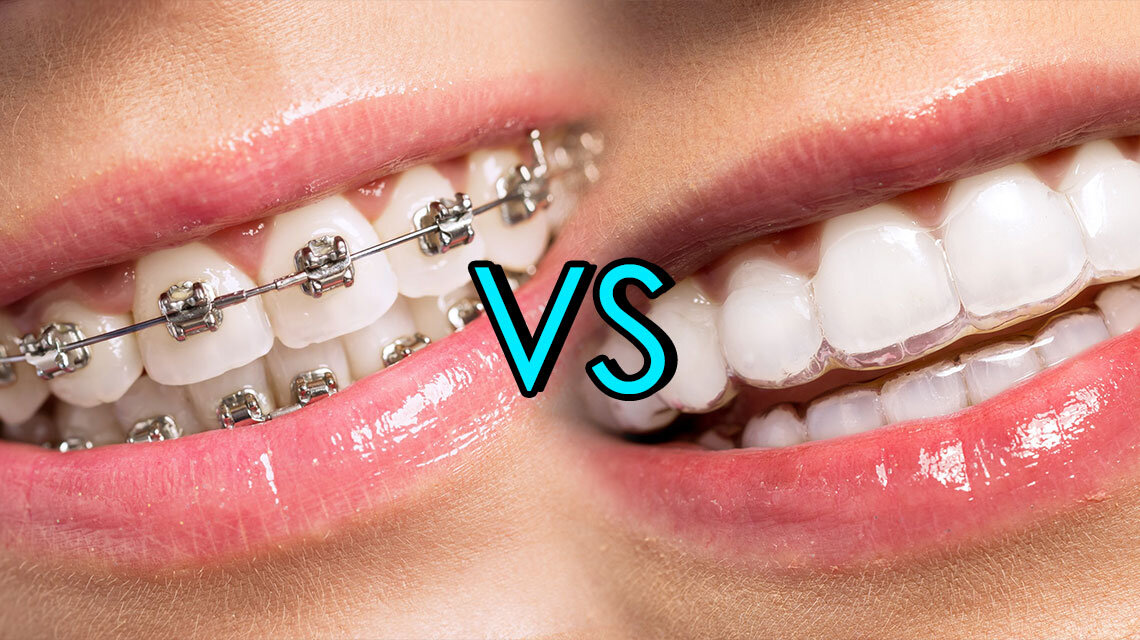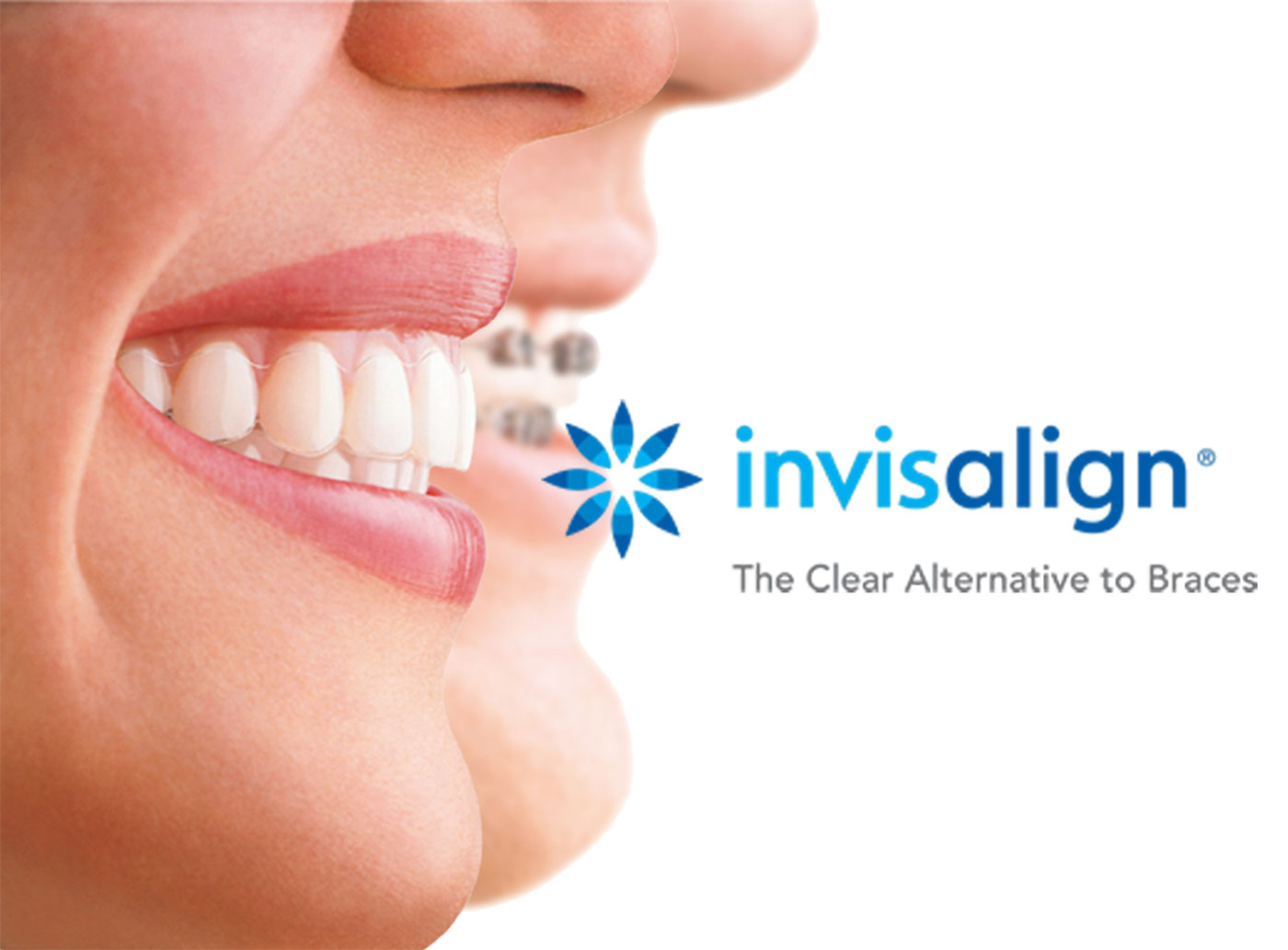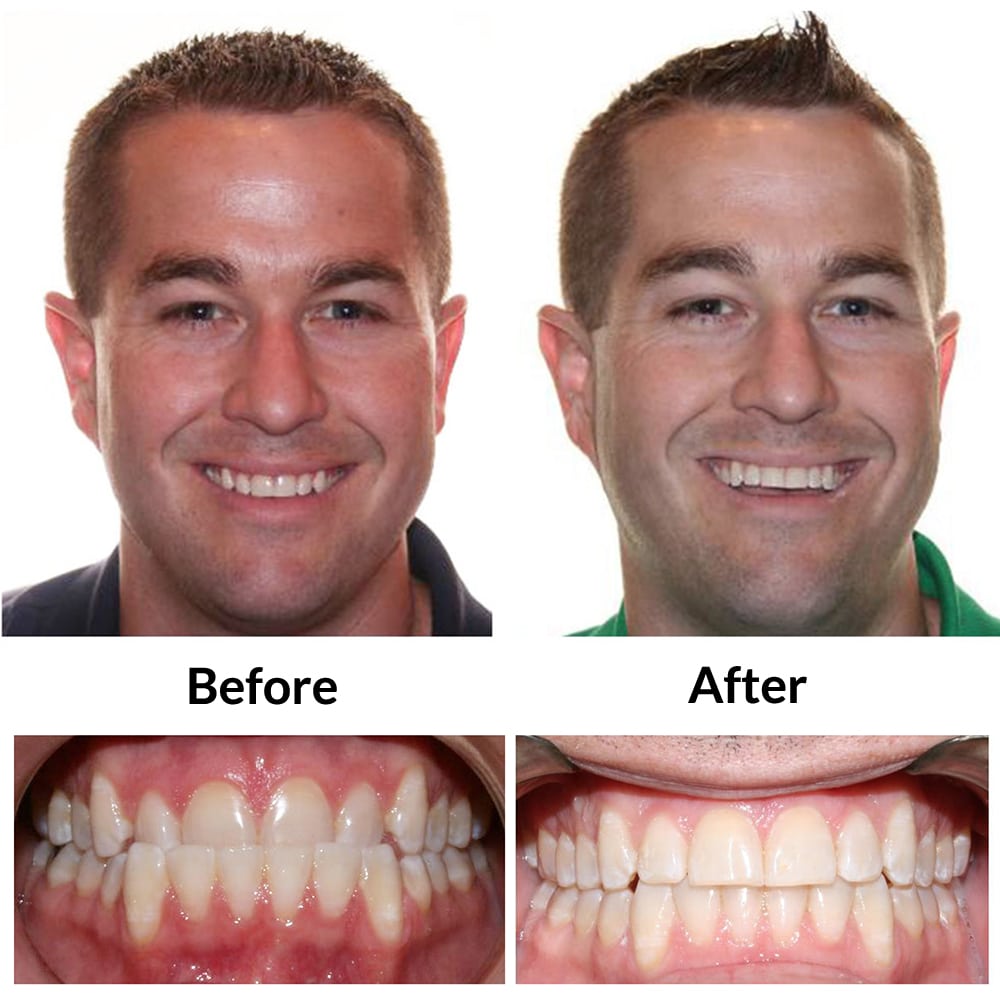Invisalign vs. Typical Dental braces: Which Option Is Right for You?
When thinking about orthodontic treatment, the option between Invisalign and conventional braces provides numerous crucial aspects that merit careful assessment. Invisalign provides a discreet alternative with detachable aligners, while typical dental braces give an extra visible yet effective solution for severe misalignment.
Summary of Therapy Choices

In comparison, standard braces include steel braces and wires that are adhered to the teeth. This approach uses continuous stress with time to achieve placement. While efficient for complex orthodontic issues, traditional dental braces call for normal check outs for modifications and can position challenges in keeping dental hygiene due to the difficulty of cleansing about wires and brackets.
Both alternatives have their benefits, and the selection frequently depends upon specific dental problems, lifestyle choices, and patient compliance. Inevitably, seeking advice from an orthodontic professional is important for identifying the most ideal therapy strategy customized to individual needs. Comprehending the subtleties of each alternative can dramatically influence the overall success of orthodontic therapy.
Visual Factors To Consider
A considerable variable affecting the selection in between Invisalign and traditional dental braces is the visual allure each therapy uses. Invisalign aligners are crafted from clear plastic, making them essentially unseen when worn.
On the other hand, traditional braces are composed of steel braces and wires, which can be a lot more noticeable. While innovations in orthodontic technology have brought about the advancement of smaller sized braces and tinted elastics, standard braces still keep an even more obvious account. For some people, the presence of braces may discourage them from seeking needed treatment.
Ultimately, the option in between Invisalign and conventional braces might depend upon personal choices relating to appearances. Patients that focus on discretion usually favor Invisalign, while those who are much less concerned concerning exposure may decide for traditional braces. Understanding the aesthetic implications of each option is vital for making an educated choice that lines up with one's way of living and preferences.
Comfort and Convenience

In terms of benefit, Invisalign aligners are removable, enabling people to appreciate their favored foods without constraint and keep ideal oral hygiene. Cleaning and flossing are streamlined, as the aligners can be taken out during these routines, whereas conventional braces call for mindful navigating around brackets and cords.
In comparison, conventional dental braces demand routine changes, making them less convenient for those with hectic timetables. Generally, the convenience and comfort of Invisalign make it an enticing option for several individuals looking for orthodontic therapy.
Treatment Period and Effectiveness
While both Invisalign and standard dental braces work in dealing with dental misalignments, the period Read Full Report of treatment can vary significantly in between both options. Usually, Invisalign therapy can take anywhere from 12 to 18 months, relying on the intricacy of the case. The clear aligners work by progressively moving teeth right into their desired settings, and routine follow-ups with an orthodontist aid make certain progress remains on the right track.
On the other hand, typical dental braces frequently require a longer commitment, normally varying from 18 months to 3 years. This results from their set nature and making use of cords and braces, which can be more effective for complex cases and serious misalignments (Invisalign). The treatment efficiency of typical dental braces is well-documented, as they permit exact changes and better control over tooth activity
Eventually, the selection in between Invisalign and typical dental braces may rest on both the expected treatment period and the details oral concerns available. Consulting with an orthodontist is important, as they can supply customized suggestions based on specific demands, making certain the picked technique aligns with desired timeframes and outcomes.
Price Comparison and Insurance Policy Choices
Cost plays a substantial function in the decision-making process for individuals taking into consideration orthodontic treatment, whether going with Invisalign or traditional dental braces. Generally, the price of Invisalign arrays from $3,000 to $8,000, while standard braces typically set you back between $2,000 and $6,000. use this link Factors affecting these costs consist of the complexity of the instance, the period of treatment, and geographical area.
Insurance insurance coverage can dramatically affect out-of-pocket expenses. Lots of dental insurance policy plans give partial protection for orthodontic therapies, but the specifics can differ widely. It is vital for clients to assess their insurance plans to identify the degree of coverage for either choice. Usually, conventional dental braces may be a lot more regularly covered by insurance strategies contrasted to Invisalign, which some insurance companies categorize as a cosmetic treatment.
Additionally, a number of orthodontic methods use adaptable settlement plans, making both therapy choices extra accessible. Clients ought to ask regarding possible funding alternatives and price cuts for ahead of time payments. Evaluating the total cost, including insurance coverage benefits and payment plans, pop over to this site is vital for making a notified decision that lines up with both aesthetic preferences and budget factors to consider.

Verdict
In recap, the selection in between Invisalign and standard braces rests on several aspects, consisting of aesthetic preferences, comfort, therapy period, and expense. Invisalign uses a discreet, removable option that facilitates oral health and nutritional versatility, while conventional braces might be preferable for complicated dental issues and often come with a reduced cost point. Inevitably, appointment with an orthodontist is important to examine private situations and identify the most ideal therapy choice for achieving optimum oral alignment.
When considering orthodontic therapy, the choice between Invisalign and typical braces provides several crucial factors that warrant careful analysis.Comparing Invisalign and traditional dental braces reveals unique treatment choices for orthodontic correction.While both Invisalign and typical braces are reliable in correcting oral misalignments, the duration of therapy can vary dramatically between the 2 options.Expense plays a substantial role in the decision-making procedure for individuals thinking about orthodontic therapy, whether opting for Invisalign or standard dental braces.In summary, the option in between Invisalign and conventional braces pivots on multiple aspects, consisting of aesthetic preferences, comfort, therapy period, and cost.